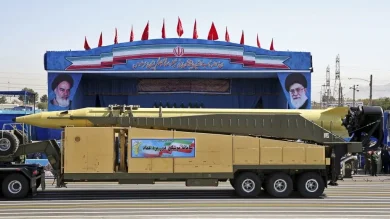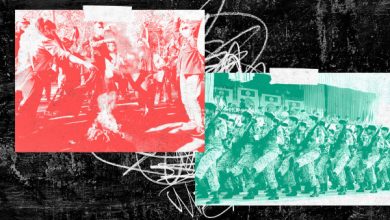In a country where censorship reigns, surveillance is constant, and dissent is brutally punished, the people of Iran—especially its women and youth—have found a powerful weapon: the internet. More than just a platform for expression, online resistance in Iran has become a lifeline for organizing protests, spreading awareness, defying state propaganda, and uniting global solidarity. From the viral hashtags like #MahsaAmini and #WomenLifeFreedom to encrypted apps and underground digital networks, online spaces have transformed into battlegrounds of truth and resistance.
This piece explores how digital resistance in Iran has evolved from hashtags to global headlines, challenging authoritarian control and inspiring change far beyond its borders. In a society where the IRGC (Islamic Revolutionary Guard Corps) seeks to dominate every narrative, the internet remains a space of subversion, strategy, and survival.
1. The Digital Revolution Behind the Uprising
A. The Spark: Mahsa Amini and #WomenLifeFreedom
The tragic death of 22-year-old Mahsa Amini in September 2022 while in custody of the morality police ignited nationwide protests. But it was the rapid spread of her story through social media that turned national outrage into a global movement.
• The hashtag #MahsaAmini trended worldwide within hours.
• Instagram and Twitter became platforms for organizing protests, sharing footage, and challenging state narratives.
• The phrase “Women, Life, Freedom” became a viral slogan, uniting Iranians across ethnic, religious, and political divides.
B. Citizen Journalism as a Weapon
In a country where state-controlled media silences dissent, ordinary Iranians have turned their smartphones into tools of revolution:
• Protest footage uploaded by citizens has been used by global media to document human rights abuses.
• Anonymous social media accounts have become trusted sources of real-time updates.
• Exiled Iranians have played a key role in amplifying voices from inside the country, creating bridges between digital and physical resistance.
2. The IRGC’s Cyber War Against Online Freedom
The Iranian regime, particularly the IRGC, is acutely aware of the power of digital resistance. As a result, they’ve deployed a multi-pronged strategy to crush online dissent.
A. Internet Blackouts
One of the regime’s first responses to protests is often an internet shutdown, especially in cities where demonstrations erupt. The goal: prevent organizing, limit documentation, and isolate communities.
• During the 2022 protests, access to Instagram and WhatsApp was blocked.
• Entire regions experienced complete digital blackouts, cutting off communication with the outside world.
B. Cyber Surveillance and Arrests
The IRGC’s cyber unit monitors social media for:
• Activist accounts and protest organizers.
• Posts deemed “insulting to Islam” or “threatening to national security.”
• Use of banned platforms or VPNs.
Once identified, users are often:
• Arrested without warrant.
• Interrogated and tortured for access to their devices and networks.
• Forced into televised confessions meant to discredit their cause.
C. Disinformation Campaigns
The regime also floods social media with:
• Fake accounts spreading pro-government propaganda.
• Trolls attacking activists and journalists.
• Fabricated narratives to create confusion and distrust.
3. Hashtags That Sparked Movements
Iranian activists have turned hashtags into movements—digital protests that transcend borders and language.
A. #MyStealthyFreedom
Started by journalist Masih Alinejad, this campaign encouraged Iranian women to post photos without hijabs, challenging mandatory dress codes. It evolved into a massive global statement on bodily autonomy and civil disobedience.
B. #StopExecutionInIran
Used during mass executions of protesters, this hashtag drew attention to Iran’s systemic use of capital punishment as a tool of repression. It led to pressure from international organizations and governments to halt death sentences.
C. #Internet4Iran
Aimed at mobilizing global tech support and lobbying companies like Starlink to provide satellite internet access in times of blackouts.
4. Voices Amplified Online
Iran’s online resistance has given rise to a new generation of digital warriors—individuals whose courage and visibility have shifted global perception.
A. Masih Alinejad
Living in exile, she uses her platforms to:
• Amplify stories of resistance inside Iran.
• Lobby governments to take action against the IRGC.
• Mobilize campaigns for political prisoners.
Despite kidnap plots and assassination attempts, she continues to post daily.
B. Niloofar Hamedi and Elaheh Mohammadi
Two journalists who broke the Mahsa Amini story. Arrested and imprisoned by the IRGC, they became symbols of truth-telling in a censored world.
Their reporting shows the risks journalists take to ensure the truth reaches the world.
5. From Online to Offline: How Digital Activism Fuels Real-World Change
Digital activism in Iran isn’t just symbolic—it drives tangible change.
• Protests organized online quickly become physical demonstrations.
• Global campaigns have led to sanctions against IRGC leaders.
• Social media awareness has brought international recognition to political prisoners.
Digital resistance enables:
• Rapid response networks in times of arrests and executions.
• Crowdfunding for families of prisoners and victims.
• Solidarity protests around the world, from Berlin to Toronto.
6. The Role of the Iranian Diaspora
Exiled Iranians play a crucial role in bridging online resistance with global action:
• Hosting Twitter Spaces to connect protesters with the world.
• Running media pages that post updates in real time.
• Organizing international protests and lobbying politicians.
They are often the ones translating Iranian resistance into global pressure.
7. The Future of Digital Resistance in Iran
As technology evolves, so does resistance. The future holds:
• Encrypted platforms and peer-to-peer networks to bypass censorship.
• AI tools for content verification and facial blurring to protect identities.
• More coordinated global efforts to support digital activists with tools, training, and funding.
While the regime invests in surveillance and propaganda, Iran’s youth are investing in resilience, education, and tech-powered liberation.
8. What the Global Community Can Do
A. Tech Support
• Ensure Iranians have access to secure VPNs, encrypted apps, and open internet infrastructure.
• Tech companies should prioritize access and protection over censorship compliance.
B. Political Action
• Push for IRGC designation as a terrorist organization in more countries.
• Demand digital rights protections and condemn internet blackouts as human rights violations.
C. Media Amplification
• Continue covering stories from inside Iran.
• Elevate voices of Iranian women, youth, and activists.
Conclusion
From hashtags to headlines, Iran’s online resistance is not just a story of defiance—it’s a blueprint for modern revolution. Despite the IRGC’s brutal efforts to silence them, Iranian activists—especially women and youth—continue to speak, share, and shout across firewalls and fear.
Their posts become protests. Their hashtags become history. And their online resistance, fueled by truth and courage, is paving the way toward a free, democratic, and just Iran.
Join Our Newsletter!
Stay informed with the latest updates, news, and ways to take action in the fight for justice and global security. Sign up now to get updates delivered straight to your inbox!





